I'm thrilled about the opportunity to intern with Apple's Engineering and Design teams. With a dual major in Mechanical Engineering and Design, I bring a robust skill set to the table. My hands-on experience in digital and physical product development makes me a strong candidate. This includes developing user-centric digital platforms, teaching Nature-Inspired Design, and integrating cutting-edge technologies like compliant mechanisms, soft robotics, folding structures, generative design, and industrial 3D printing into my product design workflow. This also highlights my understanding of the behavior of rigid, hyperelastic, laminar and natural materials, further enhancing my capabilities.
Driven by a passion for pushing design boundaries, I'm eager to contribute innovative ideas to Apple's renowned projects. I'm excited about the opportunity to bring my skills and enthusiasm to such a dynamic and innovative environment. I eagerly anticipate the chance to collaborate with and learn from the talented individuals at Apple.
My resume and cover letter are attached below.
Warm regards,
David Ramírez Corredor
Portfolio: www.schematica.studio
_________
Dear Apple recruiter,
I hope this message finds you well. I am writing to express my sincere interest in the Engineeing and Design internships opportunities within your esteemed team at Apple. With my diverse background in Mechanical Engineering and Design and hands-on experience in digital and physical product development, I am excited about the possibility of contributing to innovative projects at Apple. I’m on my last year of my double-major bachelor degree, currently studying at Aalto University in Finland.
Your call for interns who are motivated students with a good understanding of the design and mechanical behavior of materials perfectly aligns with my skill set and passion. Allow me to highlight some of the experiences and projects from my resume that I believe make me a strong candidate for this position:
These projects underscore my commitment to pushing the boundaries of design and technology to create impactful solutions. They also highlight my ability to conceptualize, design, and execute innovative solutions across diverse fields utilizing a variety of design methodologies and tools. I am eager to bring my passion for innovation, technical expertise, and collaborative spirit to your team at Apple.
Thank you for considering my application. I have attached my resume for your reference, and I would be grateful for the opportunity to further discuss how my skills and experiences align with your team's needs. I am available for an interview at your earliest convenience.
Looking forward to the possibility of contributing to the incredible work being done at Apple.
Warm regards,
David Ramírez Corredor
As a Product Designer and Mechanical Engineer, I integrate interdisciplinary STEM research with engineering precision and design intuition to create nature-inspired, sustainable solutions. My expertise in rigid, hyperelastic, laminar, and natural materials—including metals, polymers, leather and sustainable alternatives—allows me to engineer products that push material and structural boundaries. I thrive in multidisciplinary teams, leveraging biomimicry, generative design, and advanced manufacturing to develop functional, scalable, and environmentally responsible products that redefine user experiences.
I design products by balancing imagination, engineering precision, and business viability. My approach ensures that projects are not only creatively unrestricted but also technically and commercially feasible from the start. This process has enabled me to develop innovative consumer products, biomimetic packaging, and robotic soft goods solutions that integrate sustainability and user experience seamlessly.
Unlike traditional linear approaches, my process is adaptive—it doesn’t assume that every project follows the same path. Instead of refining all aspects at once, I prioritize solving the biggest uncertainty first—whether it’s technical feasibility, user experience, or scalability
Every project follows these five integrated stages:
This framework allows me to de-risk projects early, prevent wasted effort on unnecessary refinements, and ensure that every design decision contributes to both functionality and market success. It has been applied across physical products, digital experiences, and research-driven projects, ensuring adaptability across disciplines.
This project explores the integration of compliant mechanisms in product design, specifically in a detachable-handle cooking pan. By leveraging elastic deformation, the handle eliminates traditional hinges, springs, and locking pins, reducing part count while improving reliability and manufacturability. Additive manufacturing was used to prototype various morphologies, validating the structural integrity and mechanical performance of the final bistable gripping mechanism. The result is a lightweight, single-part handle with a secure grip, that targets compact living environments, such as tiny homes, RVs, and co-living spaces,
This handle’s user-centered design emphasizes ergonomics, safety, and intuitive interaction. The mechanism ensures one-handed operation, with an auto-locking feature for security and an optimized opening trigger for easy release. The rim-gripping interface prevents slippage, while the minimalist aesthetic aligns with modern CMF (Color, Material, Finish) trends in cookware. The product combines a glossy enamel pan with a matte pastel-orange handle, creating a cohesive, visually distinct look.
The detachable-handle pan targets compact living environments, such as tiny homes, RVs, and co-living spaces, where space-saving solutions are in high demand. The global cookware market, valued at $23.73 billion in 2021 and growing at a CAGR of 7.2%, presents significant opportunities for innovation. Unlike existing solutions, this design eliminates assembly complexity, offering a cost-effective, durable alternative to competing products like Tefal Ingenio and Carote.
Carried the whole project
Provided guidance and expertise in traditional mechanisms, while also graded the project and written report.
A systematic product selection process evaluated multiple household items based on relevance, mechanical feasibility, and compliance benefits. The detachable-handle pan emerged as the best candidate, given its ergonomic advantages, space-saving benefits, and potential for market adoption. The opportunity was clear: design a single-part compliant mechanism that eliminates traditional locking components while improving reliability and user experience.
We began analyzing compliant mechanisms in consumer products. A benchmarking study of detachable-handle pans identified common failure points in existing solutions, such as handle melting, grip slippage, and mechanical failure due to fatigue. Early prototypes tested various gripping and locking morphologies, refining the interaction mechanism and material properties.
The biggest challenge was designing a compliant gripping mechanism that could securely hold the pan while being easy to operate. A bistable bending arm mechanism was developed to auto-lock and release with minimal user effort. Prototyping iterations addressed grip strength, ease of use, and resistance to creep deformation under repeated loading conditions.
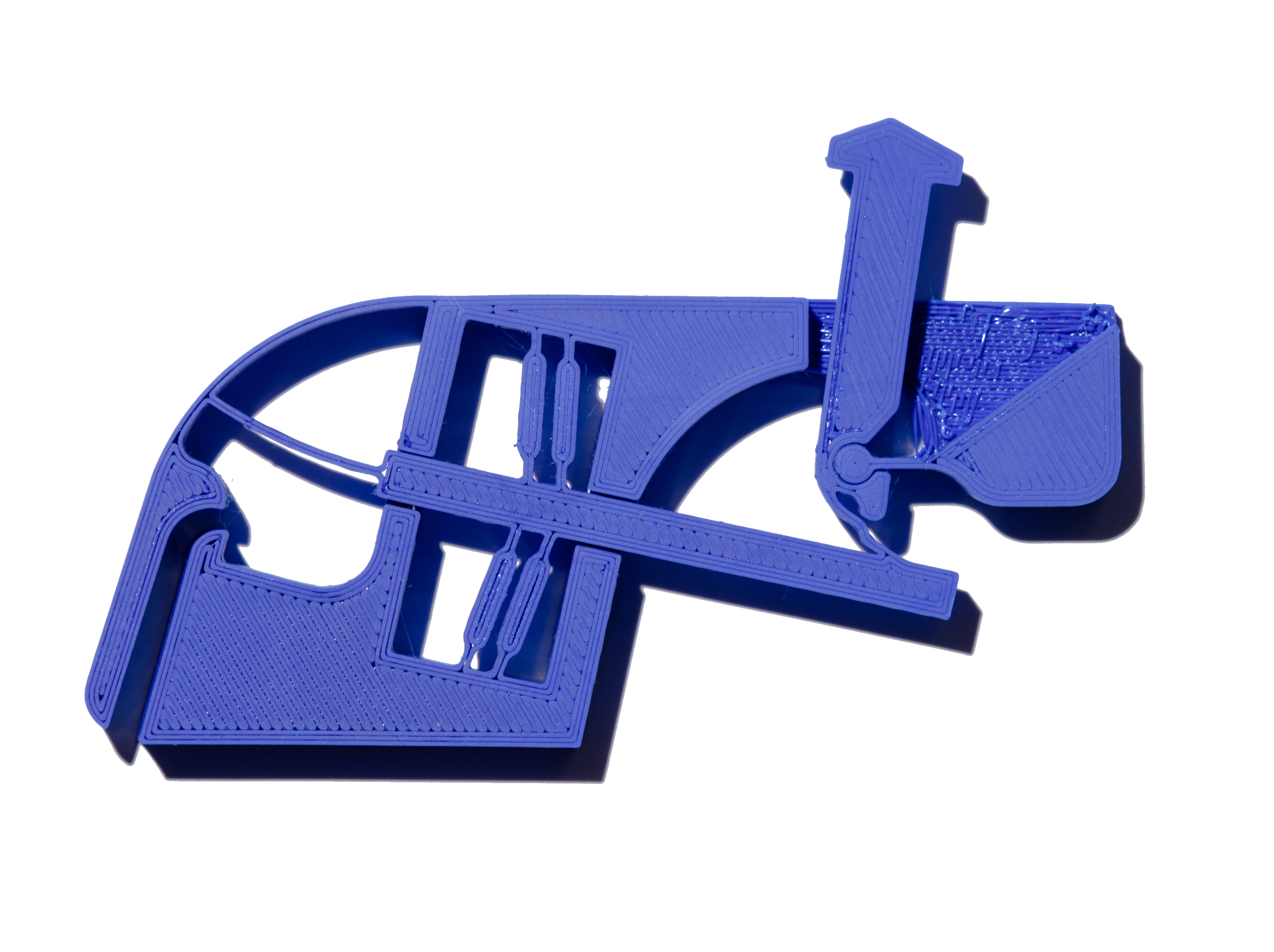
Multiple prototypes were 3D printed in PolyMide CoPA (a nylon-based polymer) to test flexural strength, heat resistance, and durability. Experimental tensile and flexural tests were conducted per ASTM standards, evaluating the effect of moisture absorption and heat treatment on mechanical properties. The results indicated that the material couldn't reach the required stiffness for this application, and thus, the iterative refinement was done with PLA prototypes.
The final prototype features a rim-gripping compliant jaw system, optimized for ergonomic operation and safety. User testing validated one-handed operation, comfortable grip force, and intuitive interaction. The handle’s monochromatic CMF palette enhances safety by visually distinguishing it from the pan. Final refinements focus on ergonomics and reducing fatigue.
Engineered a soft robotics-based mannequin capable of adapting to diverse body types through controlled material deformation. This project integrates advanced kinematic design, material behavior simulation, and robotic actuation to create a dynamic mannequin that mirrors real human proportions for inclusivity in retail displays.
Designed as an inclusive, shape-shifting retail mannequin, Forma adapts to real human body proportions, offering a more personalized shopping experience. By leveraging soft robotics, it enhances consumer interaction, redefines inclusivity, and reshapes brand perception in fashion retail through accurate representations of diverse body types.
Forma minimizes return rates in online and physical retail by providing accurate fit visualization. This innovation aligns with consumer demand for body diversity representation, making it a compelling solution for sustainable retail strategies and enhanced customer engagement.
Developed an innovative shape-shifting retail mannequin using soft robotics technology. Designed and simulated the kinematic structure to accurately represent various body types. Successfully manufactured prototype molds for the mannequin's body parts.
Dove deep into simulation in SOFA, oversaw the simulation in Fusion, and participated in the iterative design phase. Actively participated in the manufacturing of the robot.
Guided the team across the challenges in the project, and actively participated in the manufacturing process and report writing.
Fashion retail heavily relies on standardized mannequin sizes, which fail to represent the diversity of body typesamong customers. Studies indicate that inaccurate size representation leads to dissatisfaction and high return ratesin online shopping. This project was conceived to create a dynamically adjustable mannequin, addressing inclusivity gaps and enhancing customer engagement in both physical and digital retail.
The project explored soft robotics principles applied to wearable technology and prosthetics. Research indicated that silicone-based structures with pneumatic actuation could enable gradual, naturalistic deformation. A feasibility study identified core deformation axes, ensuring that shape adjustments accurately reflected real human musculature without material failure.
A key challenge was designing a material and actuation system that could support large, repeated deformations without tearing or excessive strain. Early prototypes revealed that thin-walled silicone molds tore easily, prompting iterations in mold design. The team experimented with Single-pour molds (unsuccessful due to air trapping and weak seams), Two-part segmented molds (improved structure but complex to assemble) and Rotomolding techniques (showed potential but required specialized machinery). Final refinements led to a partitioned casting approach that balanced ease of manufacturing with structural integrity.

The initial silicone cast prototypes were tested for: Shape accuracy (Comparing FEM-simulated deformation vs. real-world behavior), Durability (Evaluating elasticity, air retention, and structural fatigue over repeated cycles), and User Interaction (Conducting preliminary studies on how shoppers perceive and engage with the adaptive mannequin). Results showed that while the mechanism worked, response time needed improvement, leading to ongoing refinements in the control panel and pneumatic system.
The latest prototype integrates a refined pneumatic system for smoother transformations. Planned refinements include optimized silicone layering to enhance durability and visual realism, retail showroom trials to assess market reception and commercial interest and exploring broader applications beyond retail, such as adaptive prosthetics, gym mannequins, and ergonomic studies.
Engineered an ergonomic children’s desk using generative design and large-format 3D printing, optimizing material efficiency, structural integrity, and assembly simplicity while ensuring compliance with BIFMA stability and load standards.
Designed to grow with children, this innovative table prioritizes aesthetic harmony, ergonomic comfort, and spatial efficiency. The seamless integration of wood and plastic produces an organic, visually striking piece that enhances both home and school environments.
This table redefines sustainable children's furniture, addressing the needs of parents, educators, and design-conscious consumers. By reducing material waste through AI-driven generative design, we introduce an eco-friendly, long-lasting solution that enhances children's development and living spaces.
Traditional school desks are rigid, space-consuming, and often lack adaptability for different age groups and classroom settings. Market research revealed a growing demand for modular, ergonomic, and space-efficient furniture that integrates sustainable materials. This project leveraged generative design to develop a desk optimized for material efficiency and structural performance, ensuring adaptability for different educational environments.
Concept exploration focused on leveraging AI-driven generative design to achieve maximum strength with minimal material usage. Various topology-optimized structures were tested, ensuring a balance between load distribution, weight reduction, and manufacturability. Early iterations explored different configurations of wooden and 3D-printed components, refining the desk’s visual flow, stability, and user comfort.
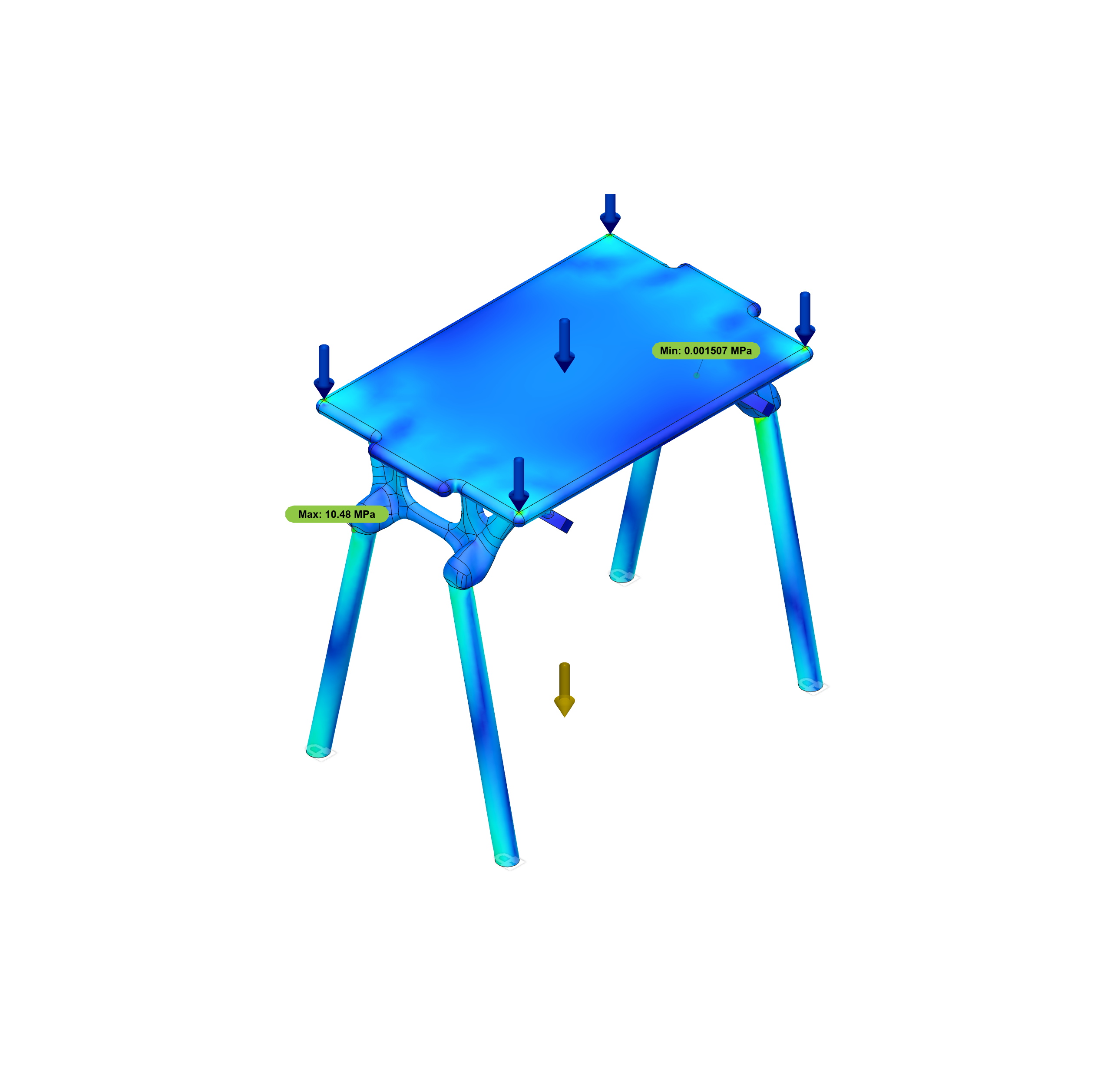
Ensuring stability and safety under classroom conditions was a primary challenge. Structural simulations tested vertical load capacity, tipping resistance, and joint stress distribution, revealing weaknesses in early thin-walled sections that required reinforced stress points. Large-scale 3D printing constraints influenced component segmentation, balancing printability and mechanical performance without excessive post-processing.
Prototype testing focused on ergonomic adjustments, ease of assembly, and classroom interaction. One-piece 3D-printed components were redesigned for modularity, simplifying transport and installation. Wood-plastic material fusion required precise joining techniques to maintain structural cohesion without adhesives. User testing revealed storage space improvements and surface refinements that enhanced practicality and visual appeal.
Final refinements optimized BIFMA compliance, manufacturability, and real-world durability. Surface treatments and reinforcement adjustments ensured long-term reliability, while final cost analysis positioned the desk competitively within the high-end educational furniture market. Next steps include validating large-scale production feasibility and securing partnerships for institutional adoption.
Engineered a transparent digital compass with a stepper motor and magnetometer, integrating precise directional recalibration while balancing structural clarity and electromagnetic interference mitigation.
Designed a transparent compass that reveals its internal mechanics, blending aesthetic appeal with intuitive interaction to create an immersive, curiosity-driven navigation experience.
Developed an adventure-driven compass that transforms routine exploration by guiding users to random destinations, enhancing spontaneous discovery in urban and natural environments.
Project conceptualization, protoyping with Arduino, mechanical design, CMF design for manufacturability.
Traditional compasses focus on accuracy, but Let’s Get Lost redefines navigation as an adventure generator. Research on urban exploration habits showed that users often stick to routine paths, missing opportunities for discovery. Instead of prioritizing precision, the project introduced randomized directionality and transparent mechanics, creating an interactive and curiosity-driven experience.
Early explorations tested various casing designs, actuation methods, and interaction mechanics to balance engagement and durability. The final concept centered around a press-activated recalibration function, with a transparent case that enhances both aesthetics and educational value. Material studies ensured optical clarity without compromising strength.
The biggest technical hurdle was preventing electromagnetic interference from the stepper motor, which disrupted magnetometer accuracy. To counter this, the motor was programmed to shut off during recalibration, while metal shielding was introduced to stabilize directional readings.
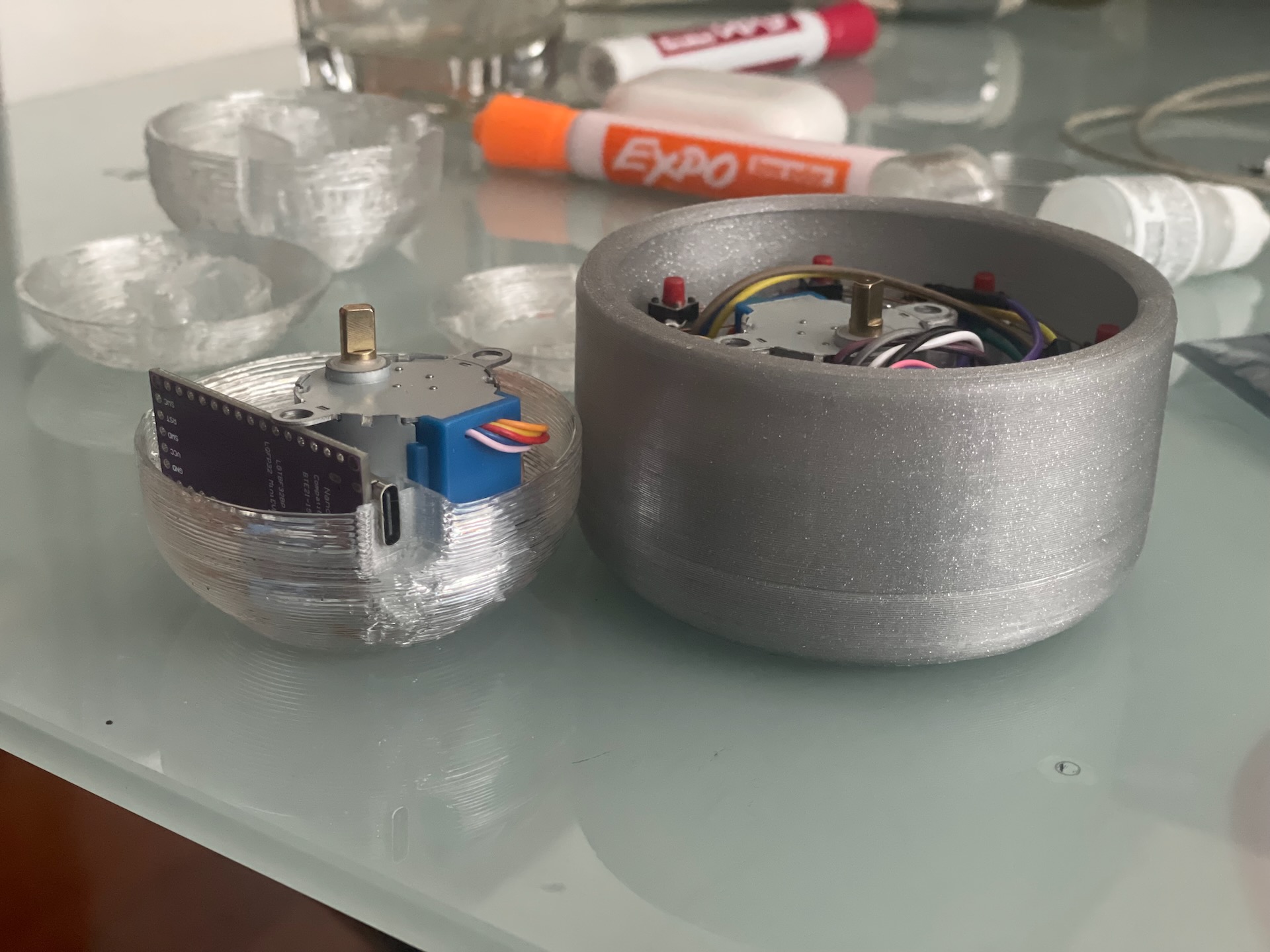
Prototyping iterations refined casing clarity, shielding, and button feedback. Initial prints had optical distortions and weak structural integrity, leading to wall thickness adjustments and extrusion layering refinements. Silicone buttons were fine-tuned for better tactile response and durability while maintaining airtight sealing.
Final refinements optimized actuation timing, improved material stress distribution, and enhanced usability. User testing led to button pressure adjustments for better interaction, and exhibition at Andando 2024 confirmed its appeal as an interactive, curiosity-driven product. Next steps include further ergonomic tuning and market positioning in adventure tourism and education.
Engineered a compact, spring-damped camera stabilizer using a four-bar linkage and a custom-tuned suspension system to absorb up-and-down motion in handheld shooting.
Designed an ergonomic, lightweight stabilization system that integrates seamlessly with consumer filmmaking gear, balancing portability, ease of use, and durability.
Developed an affordable alternative to high-end camera stabilizers, enabling content creators to achieve professional-grade cinematic motion without the cost and complexity of industry-grade equipment.
Content creators often struggle to achieve smooth camera movements without high-end stabilizers, as vertical motion from walking disrupts shots. Market research confirmed that while smartphone gimbals and handheld stabilizers exist, none effectively dampen vertical oscillations. Dampher was designed to fill this gap, providing a lightweight, accessible, and battery-free alternative to expensive motorized stabilizers.
Early concept exploration focused on purely mechanical stabilization, avoiding electronics to reduce cost and complexity. The core mechanism—a simple four-bar linkage with a tuned suspension system—was inspired by automotive dampers, balancing stiffness and responsiveness. Simulation and material studies evaluated spring force, linkage geometry, and mechanical damping to optimize vertical motion reduction while maintaining low weight and compactness.
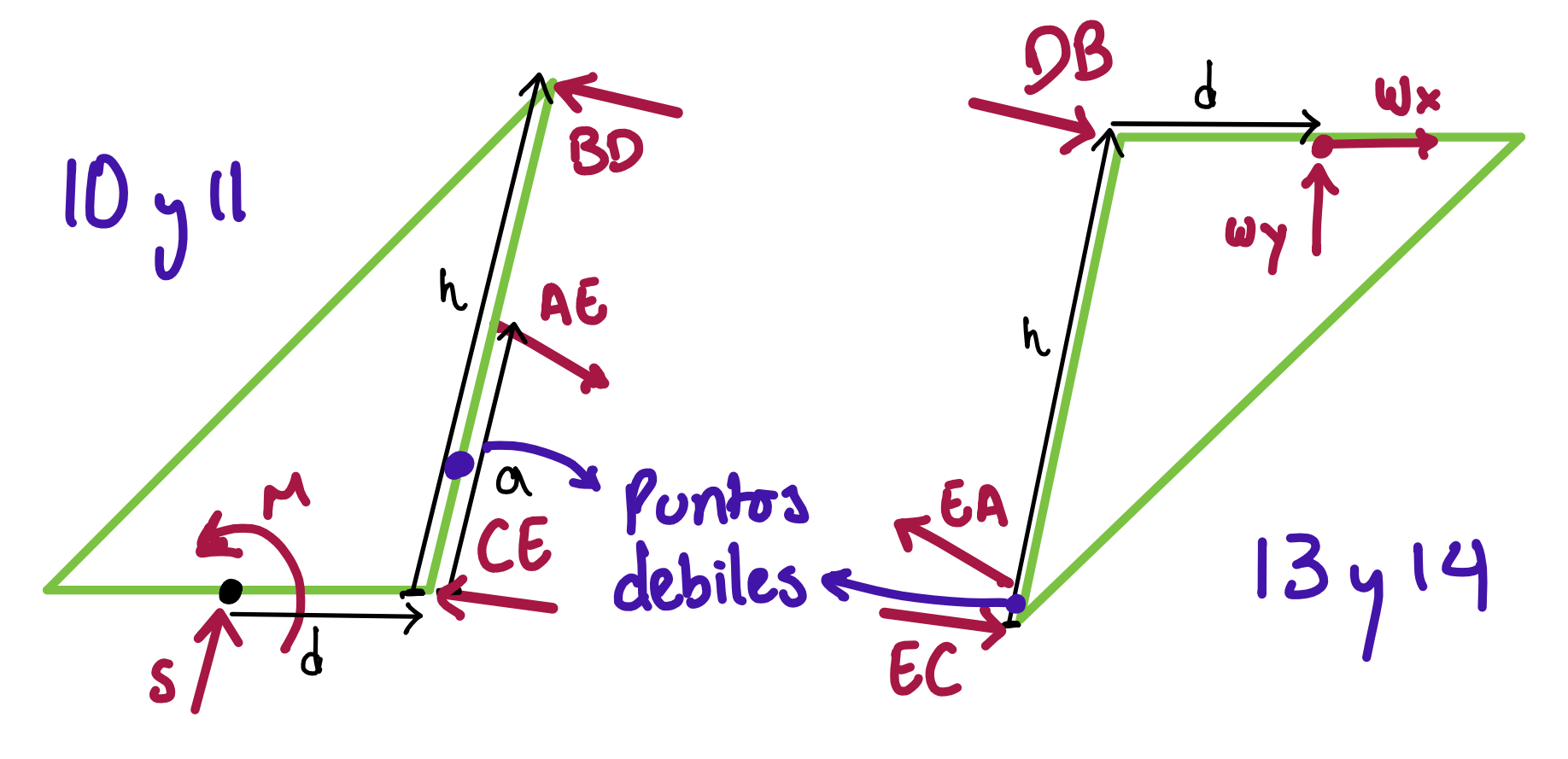
Ensuring consistent dampening without excessive bounce was a primary challenge. Initial force simulations highlighted spring tuning inconsistencies, requiring calibration to match the natural frequency of walking motion. User testing revealed that prolonged use strained wrist positioning, leading to a secondary handle attachment for better weight distribution and comfort. Further testing addressed material fatigue in high-stress pivot points, refining component wear resistance.
Prototype iterations focused on spring tuning, handle placement, and manufacturability. Initial models showed inconsistent force response, leading to custom spring fabrication to maintain uniform damping. The first 3D-printed frames experienced material creep, requiring reinforced wall thickness and embedded steel components. Additional refinements in grip texture and pivot lubrication ensured seamless, low-friction movement.
Final refinements increased material longevity, spring durability, and mechanical reliability. The CMF (Color, Material, and Finish) strategy reinforced a professional yet rugged aesthetic, while its feature at Andando 2024 drew attention to its practicality for on-the-go filmmaking. Next steps involve finalizing manufacturing techniques and exploring early adopter collaborations.
Engineered a reusable paper-based shipping wrap with a biomimetic folding structure inspired by ferns, with increased impact resistance, adaptability, and material efficiency for protective e-commerce packaging.
Designed an adaptable packaging system inspired by the self-coiling behavior of ferns, balancing structural integrity, sustainability, and ease of use for a seamless unboxing experience.
Developed a sustainable alternative to bubble wrap, reducing single-use plastics in e-commerce while offering a reusable, space-saving, and cost-effective protective packaging solution.
Plastic-based protective packaging dominates e-commerce, contributing to massive waste. LeafLock was conceived as a paper-based alternative offering protection, reusability, and compact storage without synthetic materials.
Field studies in three ecosystems led to the selection of Dryopteris Wallichiana, a fern known for its circinate (spiral) unfurling. This movement inspired LeafLock’s self-tightening wrapping mechanism, mimicking nature’s adaptive protection strategies.
The fern’s spiral growth, origami-like folds, and adaptive structure were applied to develop a self-gripping, impact-resistant wrapper. Early CAD simulations and folded paper models refined the form, optimizing material use and performance.

Prototypes underwent compression, shock absorption, and reusability tests, ensuring protection comparable to bubble wrap. The compact, foldable design proved easy to store and apply, making it an accessible alternative for e-commerce brands.
The final version integrates a refined folding structure and recyclable materials. The next phase involves real-world shipping trials and scaling production for commercial use.
Engineered a hybrid dress sneaker with a resoleable Margom NR cupsole and refined Italian shoemaking techniques, ensuring long-term durability, structural integrity, and enhanced comfort without sacrificing aesthetics.
Designed a crossover between the German Army Trainer and a work boot, featuring soft pull-up leathers, a vachetta-lined interior, and subtle dress-shoe details for a refined yet approachable aesthetic.
Developed a versatile men’s boot that merges formal elegance with sneaker-level comfort, bridging the gap between casual and dress footwear for modern professionals seeking all-day wearability.
Traditional dress shoes are elegant but uncomfortable, while sneakers are comfortable but lack versatility for formal settings. Research identified a gap in the market for a hybrid solution, catering to young professionals who primarily wear sneakers but require a more refined yet wearable alternative. The Williamsburg Boot was designed to blend formal aesthetics with sneaker-like wearability, maintaining a balance between structure, flexibility, and durability.
Early sketches explored various upper constructions, toe shapes, and material combinations to refine the intersection of sneaker comfort and dress-shoe sophistication. Prototyping began with CAD-generated patterns, aligning the design with traditional shoemaking principles while allowing digital refinement. Materials were carefully selected, featuring a pull-up leather upper for a rich patina, a supple vachetta lining for barefoot comfort, and a Margom cupsole for durability and flexibility.
Ensuring all-day comfort without sacrificing structure was a key challenge. The first prototypes revealed issues with the tongue collapsing and heel support lacking rigidity, requiring structural reinforcements in the ankle padding and the addition of a tongue stabilizer. Furthermore, the initial last shape led to pressure points on the instep, prompting a redesign of the last to better accommodate foot ergonomics.
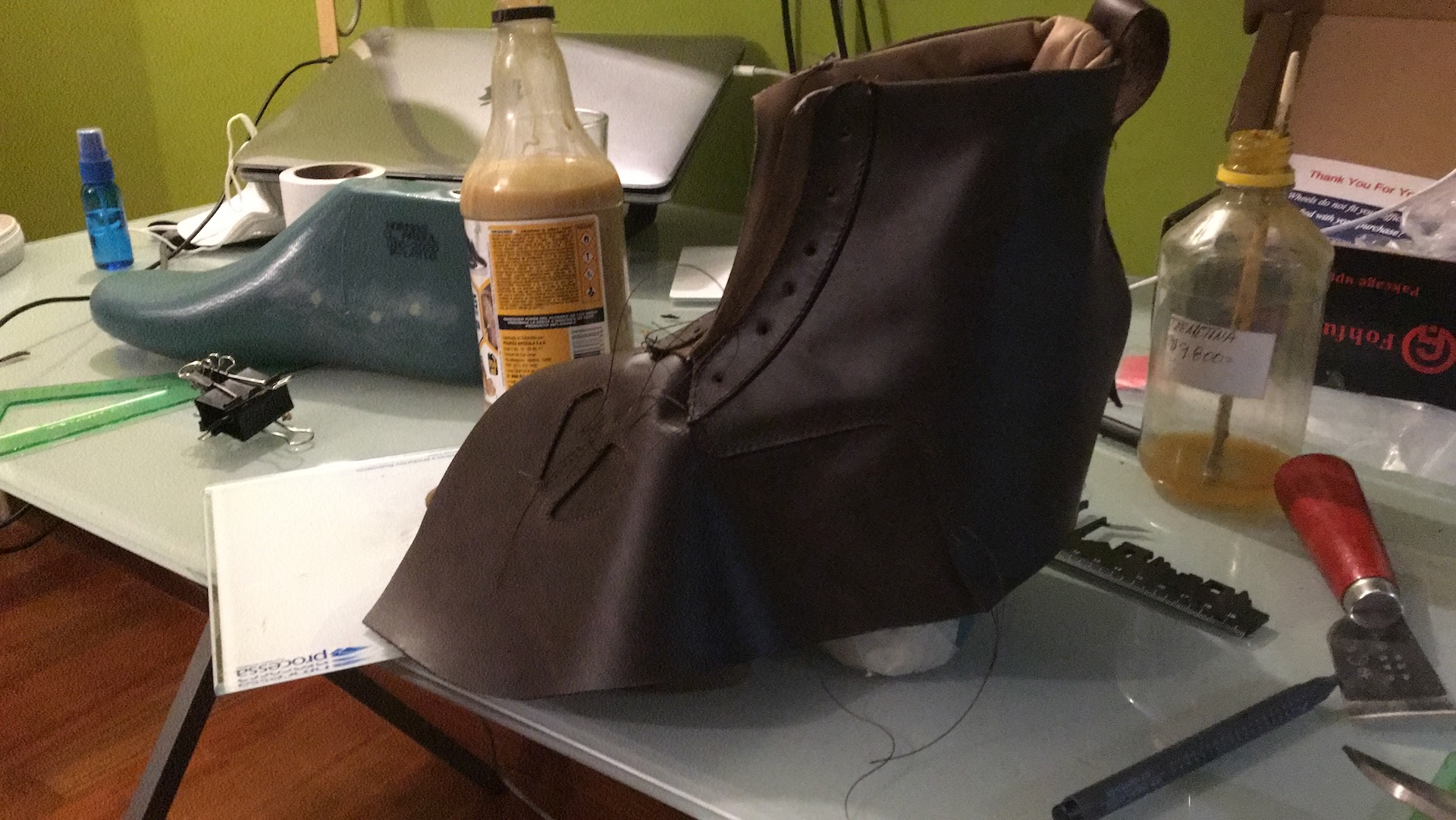
Prototype iterations refined stitching techniques, leather finishing, and outsole bonding. Early paper models validated pattern accuracy, while leather prototypes underwent pre-lasting process for 36 hours to test material behavior. Laser cutting was introduced for cleaner pattern edges, and stitching reinforcements were optimized to prevent premature wear at high-stress points.
Final refinements optimized heel stability, break-in period, and material longevity. User testing revealed that adjusting the foam collar thickness improved ankle support, refining the final design for an eventual launch. Next steps include refining commercial positioning, exploring additional material variations, and testing retail scalability.
Engineered a wet-molded leather MacBook charger case that maintains structural rigidity while allowing seamless cable access, providing a long-overdue care to an item that's commonly a second thought.
Designed a sculpted leather MacBook charger case that balances elegance and functionality, ensuring effortless charging while preserving the charger’s pristine condition with a refined, hand-crafted aesthetic.
Developed a premium leather MacBook charger case that transforms a purely functional accessory into a luxury statement, combining protection, convenience, and design appeal for style-conscious professionals.
Executed precise marker rendering techniques to accurately depict material finishes, reflections, and three-dimensional form, demonstrating the potential of analog rendering for industrial design visualization.
Designed a composition that showcases unconventional hairdryer concepts through dynamic marker rendering, effectively exploring diverse materials, finishes, and innovative forms beyond traditional product archetypes.
Developed a visually compelling poster that highlights the value of high-quality hand renderings in concept communication, reinforcing their relevance in early-stage product development and client presentations.